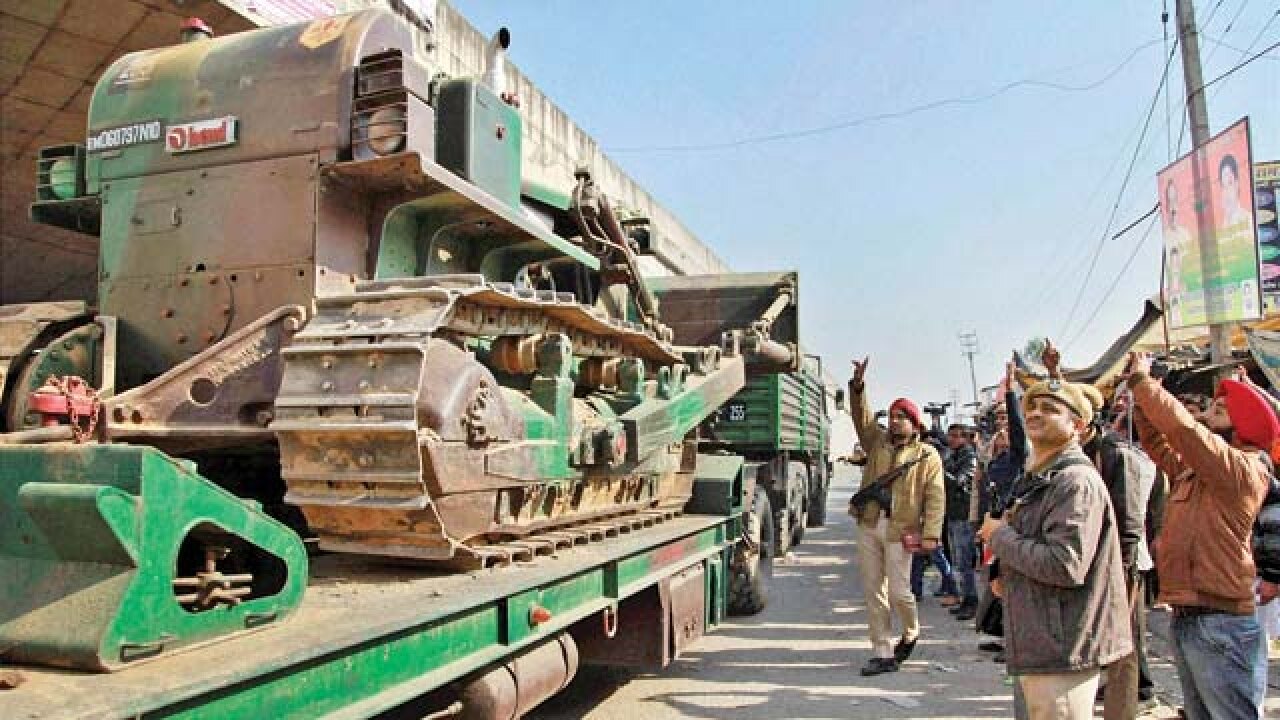
There are three loud messages emanating from the annual defence allocation of Rs 2,74,114 crore in 2017-18, an increase of 5.3 per cent over last year’s allocation.
The first is that the Modi government does not believe that war is a possibility with Pakistan or China. This thinking is betrayed in the capital outlay or the allocations for new acquisitions (from foreign and domestic companies), which are pathetically low (the equipment-intensive air force and navy get Rs 33,556 crore and Rs 19,348 crore). In both 2015-16 and 2016-17, a significant chunk of the outlay had remained unspent.
For the Modi government that professes to strengthen national defence, Rs 7,400 crore from capital outlay was returned in 2015-16, and Rs 14,000 crore in the previous year. What should be borne in mind is that the annual capital outlay is not meant to buy new goodies alone, but to pay for the contractual obligations or annual tranches for goodies bought earlier as well.
There can only be two reasons for unspent capital allocations: inability of the defence ministry to decide on what to buy, and fuzziness in the defence procurement policy. Both critical issues are the responsibility of the Union defence minister.
The second message is that the Modi government is not serious about military reforms, which are a must for a combat-ready military. Given that India has two military lines to guard — the 776km Line of Control with Pakistan and 3,488km Line of Actual Control with China — the army needs immediate reforms: foremost being a correction in its revenue to capital ratio of 82:18. What this means is that while 82 per cent of its annual allocations is spent on pay and allowances for its bloated manpower, a mere 18 per cent is available for new equipment purchases. This is the ratio for a police force, and not for a military meant for guarding territorial integrity. There is thus a strong case to cut the army’s flab, which is possible, provided the defence minister takes personal interest in the rationalisation of the army. Asking the army to do this — as the defence minister had done — will not help since no organisation would willingly shrink its domain.
The case of the equipment-intensive Indian Air Force is no better. Given that India does not have a vibrant indigenous defence industry, it is not possible to sustain 42 combat squadron (840 aircraft) fleet in addition to the critically needed force multipliers and helicopter fleet. Much like the army, the air force too, through government intervention, needs to review its operational doctrines based on a lower combat strength supplemented with cruise missiles.
The third message is that the Modi government, having made ‘Make in India’ its clarion call, is not serious about it. If ‘Make in India’ was not a slogan but a serious policy to make India technologically strong, there would have been separate allocation for Research and Development (R&D) in the aanual allocation for DRDO and Ordnance factories.
While DRDO, as the name suggests, is India’s premier R&D organisation, its budget has to sustain the manpower in 51 laboratories. A separate allocation for R&D would indicate the government’s intent for focussed reforms.
China has separate annual R&D allocation for its state-run defence industry. Similarly, in Western nations, where a majority of the defence industry is in the private sector, companies spent as much as 20 per cent of their profits on in-house R&D. The Modi government seems to be content in getting the Know-How from abroad through the domestic industry route and branding it as India’s own know-why.
Unfortunately, this is what all previous governments have done. This is why India’s defence industry is what it is. We neither make world class systems and ordnance, nor are capable of integrating sophisticated systems.
This situation remains unchanged. If all this was not enough, there is little debate in Parliament on how, why and where annual defence allocations are spent.
The writer is editor, FORCE newsmagazine and co-author of the recent book, Dragon On Our Doorstep: Managing China Through Military Power